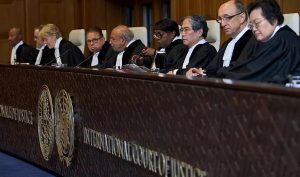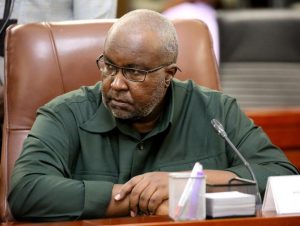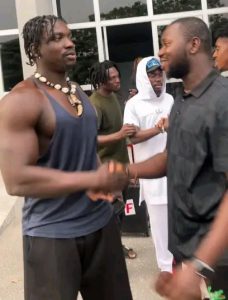Since Donald Trump’s Last Term, the Supreme Court Has Strengthened Presidential Power
4 min readSince Donald Trump first took office, the Supreme Court has been reshaped in ways that have consolidated his power and reshaped American law. When he was inaugurated in January 2017, the justices watched with uncertainty as he delivered a fiery speech vowing to end what he called “American carnage.” Back then, there was ambiguity about how Trump would interact with the court, but over the course of his presidency, that mystery has dissolved.
Trump appointed three justices during his first term—Neil Gorsuch, Brett Kavanaugh, and Amy Coney Barrett—altering the ideological balance of the court. Along with Justices Clarence Thomas and Samuel Alito, who have long been aligned with conservative views, these justices now form a significant conservative majority. As a result, Trump’s impact on the judiciary is undeniable, with rulings that have bolstered his power and diminished legal norms.
Under this reconstituted court, many of Trump’s policies and legal battles have received favorable outcomes. One of the most significant early victories was the 2018 ruling that upheld his controversial travel ban targeting several Muslim-majority countries. The justices were divided, but the majority sided with Trump, allowing his executive discretion to suspend immigration from certain countries despite his past inflammatory rhetoric. Chief Justice John Roberts, though wary of Trump’s divisive language, ruled that his actions were within presidential authority.
In 2022, the court made another landmark decision by overturning Roe v. Wade, which had guaranteed abortion rights for nearly 50 years. This was a key win for conservatives and for Trump’s influence on the court, as all three of his appointees voted to end federal protections for abortion rights. This decision was part of a broader shift where the court began to align more with conservative principles on key social issues.
Trump also scored a legal victory in the courts when the Supreme Court ruled to shield him from criminal prosecution related to actions taken while in office, including efforts to overturn the 2020 election results. This decision marked a dramatic expansion of presidential power, with the court offering Trump substantial immunity from legal challenges stemming from his official actions.
Over time, the relationship between Trump and the justices became more apparent. Some, like Thomas and his wife, Ginni, had close personal ties with Trump. They attended private dinners, and Ginni Thomas actively supported efforts to overturn the 2020 election results. Meanwhile, Justice Samuel Alito’s relationship with Trump was also notable, especially when it emerged that he had discussed a former law clerk’s potential appointment with Trump just before the court heard a case involving Trump’s legal challenges.
The first term of Trump’s presidency also saw his influence grow in other ways. Justice Roberts, despite some tension with Trump, remained a key figure in guiding major rulings, such as the one that shielded Trump from prosecution. But as time passed, the ideological divide within the court became clearer. Trump’s appointees were his most consistent allies, and they continued to push his agenda on major cases involving reproductive rights, racial justice, and executive power.
The court’s current alignment has given Trump significant leeway in the face of legal challenges, especially as he seeks to return to the White House. In cases like the hush-money scandal, where Trump was found guilty of falsifying business records, his appointees were quick to side with him, helping him avoid further legal complications.
However, not all justices have been as supportive. Liberal justices, such as Sonia Sotomayor, have been outspoken in their criticisms of Trump. Sotomayor, for example, dissented in the case regarding Trump’s travel ban, citing his past rhetoric against Muslims. She has also questioned whether Trump would abide by congressional laws, particularly when it comes to the regulation of apps like TikTok.
The court’s shift has coincided with a decline in public trust in its impartiality. Approval ratings have dropped, partly due to perceptions of partisan bias and ethical concerns surrounding the justices’ relationships with political figures, including Trump. Chief Justice Roberts has attempted to deflect criticism, emphasizing that public officials should not intimidate or discredit the judiciary.
Trump’s relationship with the court has evolved, from initially questioning its decisions to later praising it for its rulings in his favor. As he prepares for a potential second term, the court’s decisions have solidified a legal landscape that significantly enhances the president’s power. His appointees, along with his conservative allies on the bench, have positioned him to exert greater control over key issues, setting the stage for his future legal and political battles.
As Trump returns to the White House, the Supreme Court, under its reshaped conservative majority, will continue to play a pivotal role in his agenda, whether it’s dealing with his legal challenges or advancing his political priorities. With the justices now firmly aligned with his vision, the future of American law and politics appears more closely tied to his influence than ever before.








